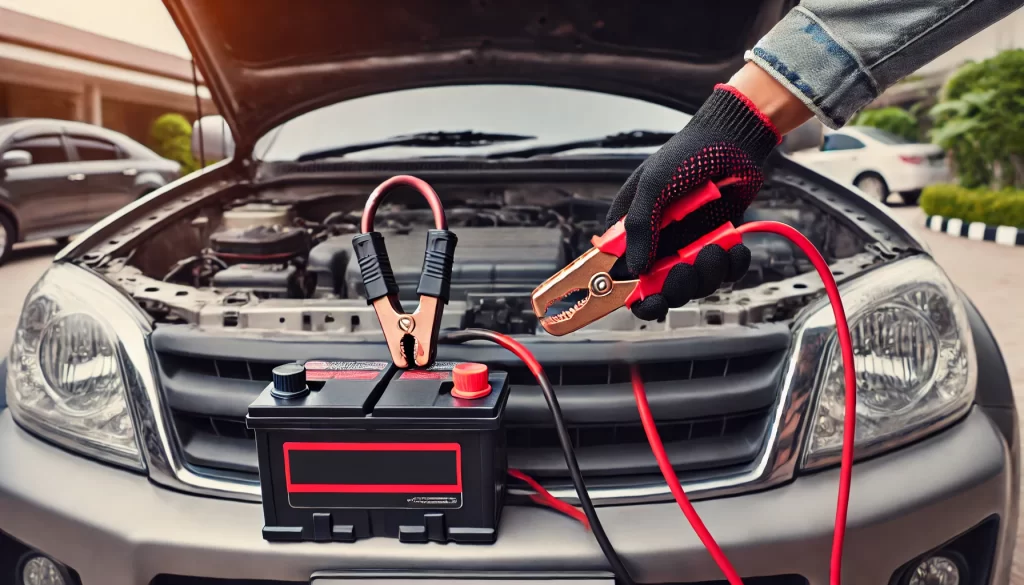How Long Does It Take to Jump a Car? Shocking Time Reveal!

Jumping a car is one of those essential life skills every driver should know. But how long does it take to jump a car? Whether you’re in a rush or simply trying to prepare for an emergency, this question often arises when the car battery dies. In this guide, we’ll dive deep into the process, answer the burning question, and give step-by-step instructions for a successful jump start.
What Is Jump-Starting a Car?
Before we understand how long does it take to jump a car, let’s quickly understand what jump-starting means. A jump-start is when a vehicle with a dead or weak battery is connected to another car’s battery, giving it enough charge to start. This is typically done using jumper cables or a portable jump starter. Once the vehicle starts, the alternator recharges the battery as the engine runs.
Why Would You Need to Jump a Car?

There are many reasons why a car might need a jump-start:
- Leaving the headlights or interior lights on
- Cold weather draining the battery
- An old or faulty battery
- Alternator problems
In any of these situations, knowing how long does it take to jump a car can give you peace of mind and help you avoid frustration.
How Long Does It Take to Jump a Car?
Here’s the moment you’ve been waiting for. So, how long does it take to jump a car? On average, it takes around 5 to 15 minutes to jump-start a vehicle. However, the total time can vary depending on a few factors:
- Condition of the battery: If your battery is completely dead, it might take longer for the jump to work.
- Size of the battery: Larger batteries may require more time to charge.
- Quality of the jumper cables: Thick cables will transfer energy more efficiently.
In most cases, once the cables are correctly connected, the car should start within a few minutes. Understanding how long does it take to jump a car can help you stay calm.
Step-by-Step Guide to Jumping a Car

Now that we’ve answered the main question, let’s walk through how to jump a car. Carefully following the steps is imperative to prevent mistakes.
Step 1: Position the Vehicles
First, make sure both cars are turned off. Position the running vehicle (with a good battery) close enough to the car that needs the jump so the cables can reach both batteries. Verify that the vehicles are not in contact with one another.
Step 2: Connect the Jumper Cables
- Attach the red (positive) cable clamp to the dead battery’s positive terminal.
- Next, attach the red cable’s opposite end to the operational battery’s positive terminal.
- Next, attach the black (negative) cable clamp to the good battery’s negative terminal.
- Finally, attach the other end of the black cable to a grounded metal surface on the car with the dead battery (a clean, unpainted part of the engine block is ideal).
Step 3: Start the Working Car
Turn on the working car and let it run for 2-5 minutes to send power to the dead battery. This process plays a significant role in how long it takes to jump a car.
Step 4: Start the Dead Car
Now, try starting the car with the dead battery. If it doesn’t start immediately, let it sit for another few minutes before trying again.
Step 5: Disconnect the Jumper Cables
After the vehicle starts, remove the cables in the opposite order. Start by removing the black (negative) cable from the metal surface and the working battery. Next, remove the red (positive) cable from the good battery and finally from the car you just jumped in.
Step 6: Let the Car Run
After a successful jump-start, let the car run for at least 15-20 minutes to allow the alternator to recharge the battery fully.
Factors That May Affect Jump-Starting Time
While the average time to jump a car is 5 to 15 minutes, certain factors can speed up or delay the process.
Battery Condition
A slightly drained battery will take less time to jump than a completely dead one. If the battery is old, it might not hold a charge as efficiently, leading to a longer jump time or a need for replacement. This dramatically impacts how long it takes to jump a car.
Weather Conditions
Cold weather can significantly impact how long it takes to jump a car. Batteries lose power faster in freezing temperatures, making it harder to jump-start the vehicle in winter.
Quality of Jumper Cables
High-quality, thicker jumper cables with better conductivity can help the process go faster. Thin, cheap cables may not transfer enough power, slowing the process.
Common Mistakes When Jumping a Car
Even though jumping a car seems straightforward, there are a few common mistakes to avoid that can affect how long it takes to jump a car or even prevent the process from working altogether.
Not Letting the Battery Charge
Many people need to try to start the car more quickly. Let the working car send power to the dead battery for a few minutes before attempting to start it.
Misplacing the Jumper Cables
Improperly connecting the jumper cables can delay the process and cause severe damage to both vehicles’ battery and electrical systems.
Not Checking the Battery Terminals
Dirty or corroded battery terminals can slow the transfer of electricity and make it harder to jump-start the car. Always check the terminals before attaching the jumper cables.
Also Read: How Much Does It Cost to Tint a 4-Door Car? Discover Shocking Savings!
How to Avoid Needing a Jump Start
No one likes dealing with a dead battery, especially in a hurry. Here are a few tips to avoid needing a jump-start in the first place:
- Turn off lights and accessories: Always double-check that the headlights, dome lights, and other accessories are off when you exit the car.
- Keep your battery clean: Regularly check for corrosion on the battery terminals and clean them if necessary.
- Check the battery’s health: Have your battery checked during routine maintenance to ensure it’s still in good condition. This is a critical factor in determining how long it takes to jump a car.
How long does it take to jump a car? In most cases, you can jump a car in 5 to 15 minutes, depending on factors like the battery’s condition, weather, and the quality of your jumper cables. Jump-starting is a quick and easy solution, so understanding how long it takes to jump a car can save you time and frustration.
Whether it’s freezing outside or you’re just in a rush, knowing how long it takes to jump a car and following the proper steps will ensure you’re back on the road in no time!



